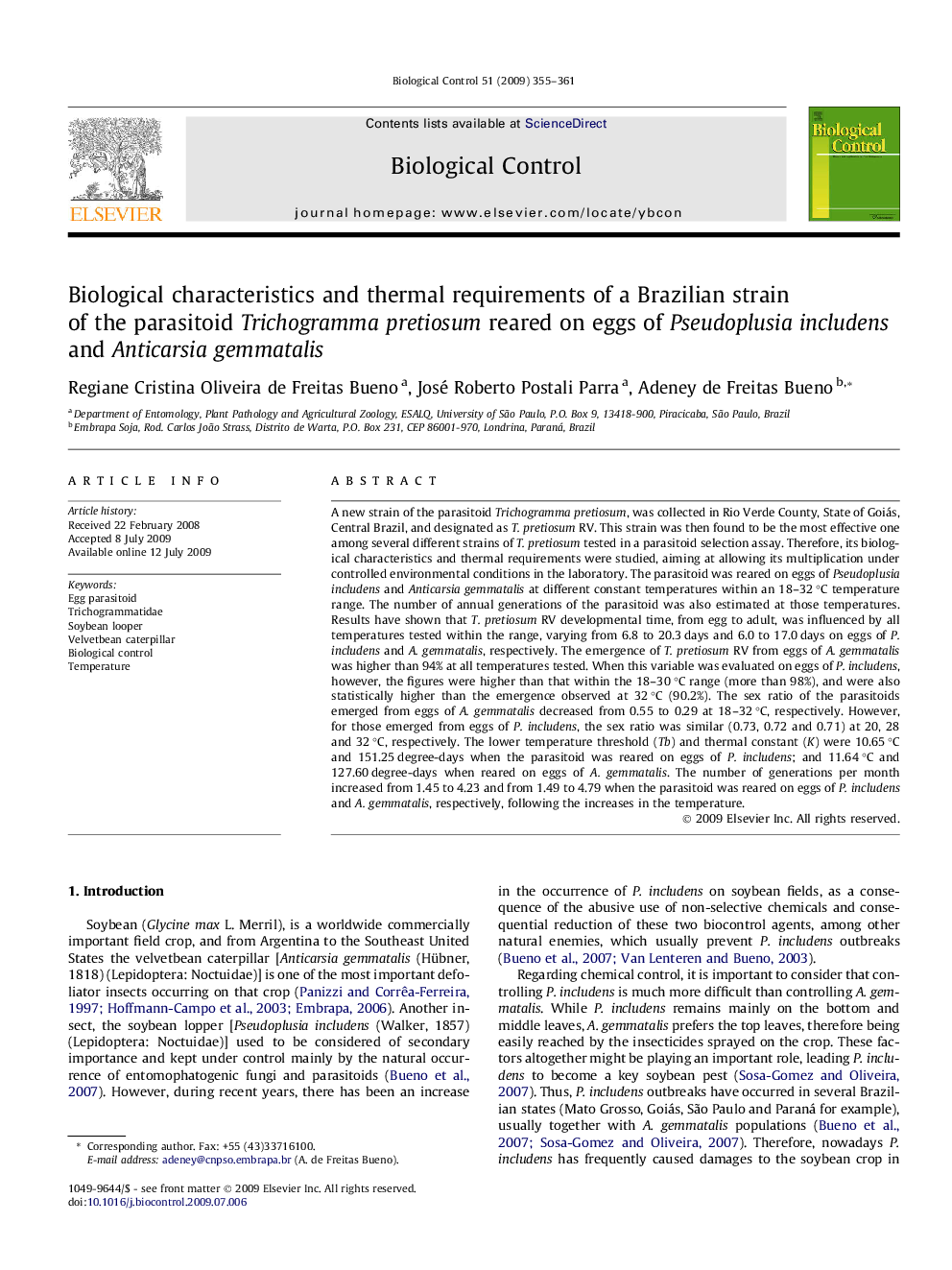| Article ID | Journal | Published Year | Pages | File Type |
|---|---|---|---|---|
| 4504536 | Biological Control | 2009 | 7 Pages |
Abstract
A new strain of the parasitoid Trichogramma pretiosum, was collected in Rio Verde County, State of Goiás, Central Brazil, and designated as T. pretiosum RV. This strain was then found to be the most effective one among several different strains of T. pretiosum tested in a parasitoid selection assay. Therefore, its biological characteristics and thermal requirements were studied, aiming at allowing its multiplication under controlled environmental conditions in the laboratory. The parasitoid was reared on eggs of Pseudoplusia includens and Anticarsia gemmatalis at different constant temperatures within an 18-32 °C temperature range. The number of annual generations of the parasitoid was also estimated at those temperatures. Results have shown that T. pretiosum RV developmental time, from egg to adult, was influenced by all temperatures tested within the range, varying from 6.8 to 20.3 days and 6.0 to 17.0 days on eggs of P. includens and A. gemmatalis, respectively. The emergence of T. pretiosum RV from eggs of A. gemmatalis was higher than 94% at all temperatures tested. When this variable was evaluated on eggs of P. includens, however, the figures were higher than that within the 18-30 °C range (more than 98%), and were also statistically higher than the emergence observed at 32 °C (90.2%). The sex ratio of the parasitoids emerged from eggs of A. gemmatalis decreased from 0.55 to 0.29 at 18-32 °C, respectively. However, for those emerged from eggs of P. includens, the sex ratio was similar (0.73, 0.72 and 0.71) at 20, 28 and 32 °C, respectively. The lower temperature threshold (Tb) and thermal constant (K) were 10.65 °C and 151.25 degree-days when the parasitoid was reared on eggs of P. includens; and 11.64 °C and 127.60 degree-days when reared on eggs of A. gemmatalis. The number of generations per month increased from 1.45 to 4.23 and from 1.49 to 4.79 when the parasitoid was reared on eggs of P. includens and A. gemmatalis, respectively, following the increases in the temperature.
Related Topics
Life Sciences
Agricultural and Biological Sciences
Agronomy and Crop Science
Authors
Regiane Cristina Oliveira de Freitas Bueno, José Roberto Postali Parra, Adeney de Freitas Bueno,
